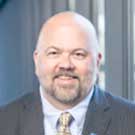|
|
 |
|
The
views expressed
on this page are soley those of the author and do not
necessarily
represent the views of County News Online
|
 |
Federal News Radio
Cutting the
federal workforce is harder than it sounds
By Jeff Neal
February 8, 2017
The Trump administration and the Congress have been talking about
reducing the size of the federal workforce. Given that the President
and many members of Congress ran on a platform of doing just that, it
should not come as a surprise to anyone.
Like many things in life, this one is harder than it might appear to
be. There are three reasons why I believe that to be true.
Federal News Radio conducted an exclusive data center survey to assess
how agencies are storing data. Download the results.
First, the “government” is unpopular with many folks, but specific
programs/agencies are not. An interesting 2013 Pew Research Center
report looked at how Americans view federal agencies. They found that
wide majorities had favorable views of the U.S. Postal Service, the
Department of Defense, the Centers for Disease Control, NASA, the
Environmental Protection Agency and several other agencies/programs.
So, while there may be widespread support for the abstract idea of
cutting the size of the federal workforce, it is likely that many of
the cuts that could be made may not be popular. There’s an old
expression in Washington: “Don’t cut you, don’t cut me — cut that fella
behind the tree.” If cuts start to target specific (and popular)
agencies, we may see public pressure to protect investments in those
agencies and programs.
Second, the desire to cut some programs/agencies is coupled with an
interest in growing others. Math still works, so when the growing
agencies and shrinking agencies are combined, the numbers do not always
move in the intended direction. The best example was the Reagan
administration. President Reagan came to office with a clear message
that he planned to shrink the government, and said, “A government
bureau is the nearest thing to eternal life we’ll ever see on this
earth.” So what happened during his administration? OPM data shows that
the Executive Branch (including the Postal Service) workforce numbered
2,821,000 in 1980. After eight years of cutting civilian agencies and
growing the Department of Defense, at the end of 1988, the workforce
had grown to 3,054,000. The growth in Defense far outstripped cuts that
were made to other agencies.
President Donald Trump has called for 15,000 new employees (5,000
Border Patrol agents and 10,000 in ICE) in the Homeland Security
Department. Secretary of Defense James Mattis has called for growing
the armed forces, while the Army and Navy have expressed interest in
focusing on military readiness. It is likely DoD will find some areas
to economize and work more efficiently, but historically growth in
uniformed personnel and attention to readiness have resulted in a
larger DoD civilian workforce.
When we couple the potential for growth in Defense and Homeland
Security with other programs that are hard to cut (such as veterans
benefits and health care), large parts of the federal workforce come
off the table. DoD, DHS and VA represent 1,302,000 of the current
1,923,000 federal employees. If we estimate growth in DHS at 5 percent
(adding the 15,000 President Trump plans, while eliminating a big chunk
of overhead jobs), and 5 percent at DoD, while keeping VA at current
levels, the workforce would grow by almost 50,000. Cutting those 50,000
from the other agencies would be an across-the-board cut of 8 percent.
To get to a reduction in the overall federal workforce, we have to add
a much larger cut than 8 percent. For example, a 10 percent cut of the
total federal workforce would require a 39 percent cut in agencies
other than DoD, DHS and VA. If we exempt other agencies (for example,
Treasury Secretary Steven Mnuchin has said he wants to increase the IRS
workforce to improve revenue collection) the cuts in remaining agencies
become even larger.
The final reason is jobs in congressional districts. While it may be
popular to bash Washington, the fact is that the majority of federal
jobs are not in the National Capital Region. They are in Florida
(73,000), California (131,000), Georgia (67,000), Pennsylvania
(52,000), Ohio (45,000) and other states. When political decisions
become hard facts and constituents start to lose their jobs, there is
always political pressure to protect the employment of constituents.
It clearly is not easy to make big reductions in the federal workforce.
Perhaps the desire to reduce the size of government will overcome the
popularity of many agencies and the interest in protecting the jobs of
constituents. In politics, almost anything is possible.
Read this and other articles at Federal News Radio
|
|
|
|

